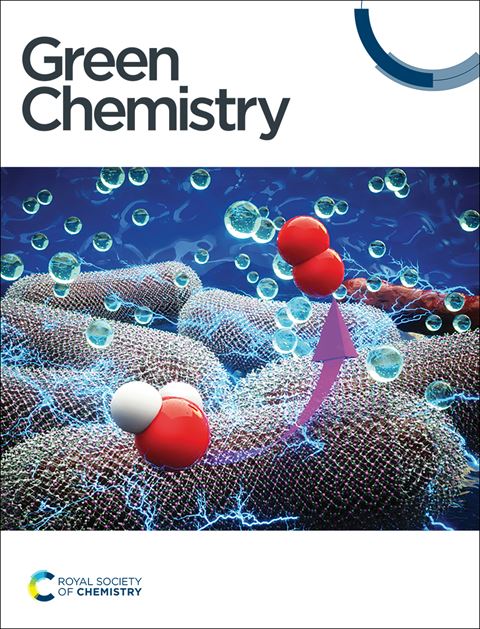Highly efficient photocatalytic synthesis of disulfides by a self-assembled CsPbBr3/Ti3C2Tx MXene heterojunction†
IF 9.3
1区 化学
Q1 CHEMISTRY, MULTIDISCIPLINARY
引用次数: 0
Abstract
The utilization of solar energy, an inexhaustible resource, to drive photocatalytic oxidation reactions is posited as a viable strategy for mitigating issues such as greenhouse gas emissions stemming from fossil fuel consumption. Given the abundant catalytic sites, superior electrical conductivity and self-supported architecture of MXene nanosheets, herein, we developed heterojunction CsPbBr3/Ti3C2Tx MXene nanocomposites and realized their application in photocatalytic oxidation of thiols to yield both symmetrical and asymmetrical disulfides with high efficiency (29 700 μmol g−1 h−1). An efficient excited state charge transfer occurs between CsPbBr3 NCs and MXene nanosheets, which features exceptional activity and stability. The good performance of these perovskite nanocomposites leads to an economical, sustainable and thus green process for organic synthesis.
自组装CsPbBr3/Ti3C2Tx MXene异质结†高效光催化合成二硫化物
利用太阳能这一取之不尽、用之不竭的资源来驱动光催化氧化反应,被认为是缓解化石燃料消耗造成的温室气体排放等问题的可行策略。鉴于MXene纳米片具有丰富的催化位点、优异的导电性和自支撑结构,我们开发了异质结CsPbBr3/Ti3C2Tx MXene纳米复合材料,并实现了其在硫醇光催化氧化中高效(29700 μmol g−1 h−1)生成对称和不对称二硫化物的应用。CsPbBr3纳米片与MXene纳米片之间发生了高效的激发态电荷转移,具有良好的活性和稳定性。这些钙钛矿纳米复合材料的良好性能导致了一种经济、可持续和绿色的有机合成工艺。
本文章由计算机程序翻译,如有差异,请以英文原文为准。
求助全文
约1分钟内获得全文
求助全文
来源期刊

Green Chemistry
化学-化学综合
CiteScore
16.10
自引率
7.10%
发文量
677
审稿时长
1.4 months
期刊介绍:
Green Chemistry is a journal that provides a unique forum for the publication of innovative research on the development of alternative green and sustainable technologies. The scope of Green Chemistry is based on the definition proposed by Anastas and Warner (Green Chemistry: Theory and Practice, P T Anastas and J C Warner, Oxford University Press, Oxford, 1998), which defines green chemistry as the utilisation of a set of principles that reduces or eliminates the use or generation of hazardous substances in the design, manufacture and application of chemical products. Green Chemistry aims to reduce the environmental impact of the chemical enterprise by developing a technology base that is inherently non-toxic to living things and the environment. The journal welcomes submissions on all aspects of research relating to this endeavor and publishes original and significant cutting-edge research that is likely to be of wide general appeal. For a work to be published, it must present a significant advance in green chemistry, including a comparison with existing methods and a demonstration of advantages over those methods.
 求助内容:
求助内容: 应助结果提醒方式:
应助结果提醒方式:


